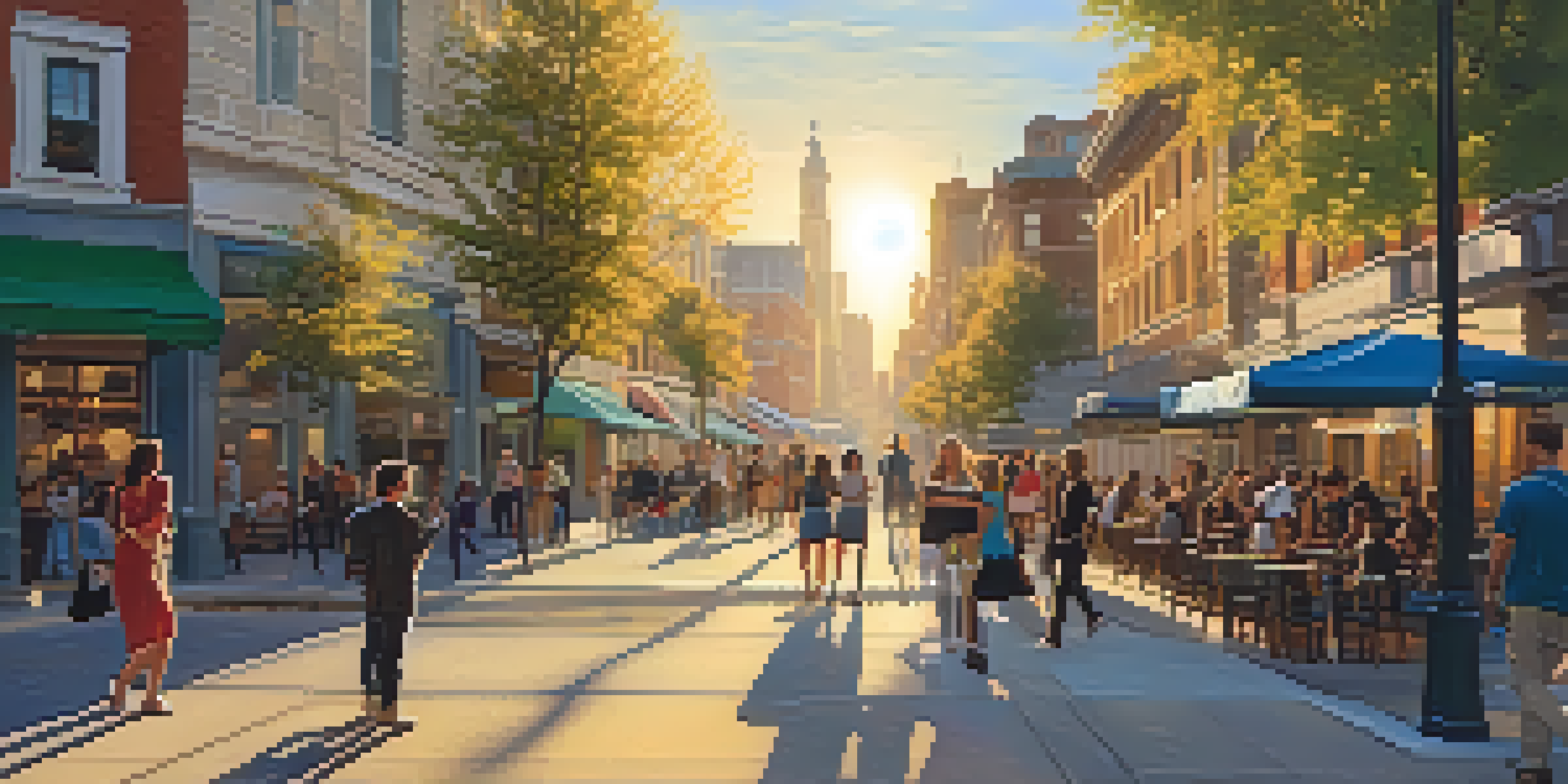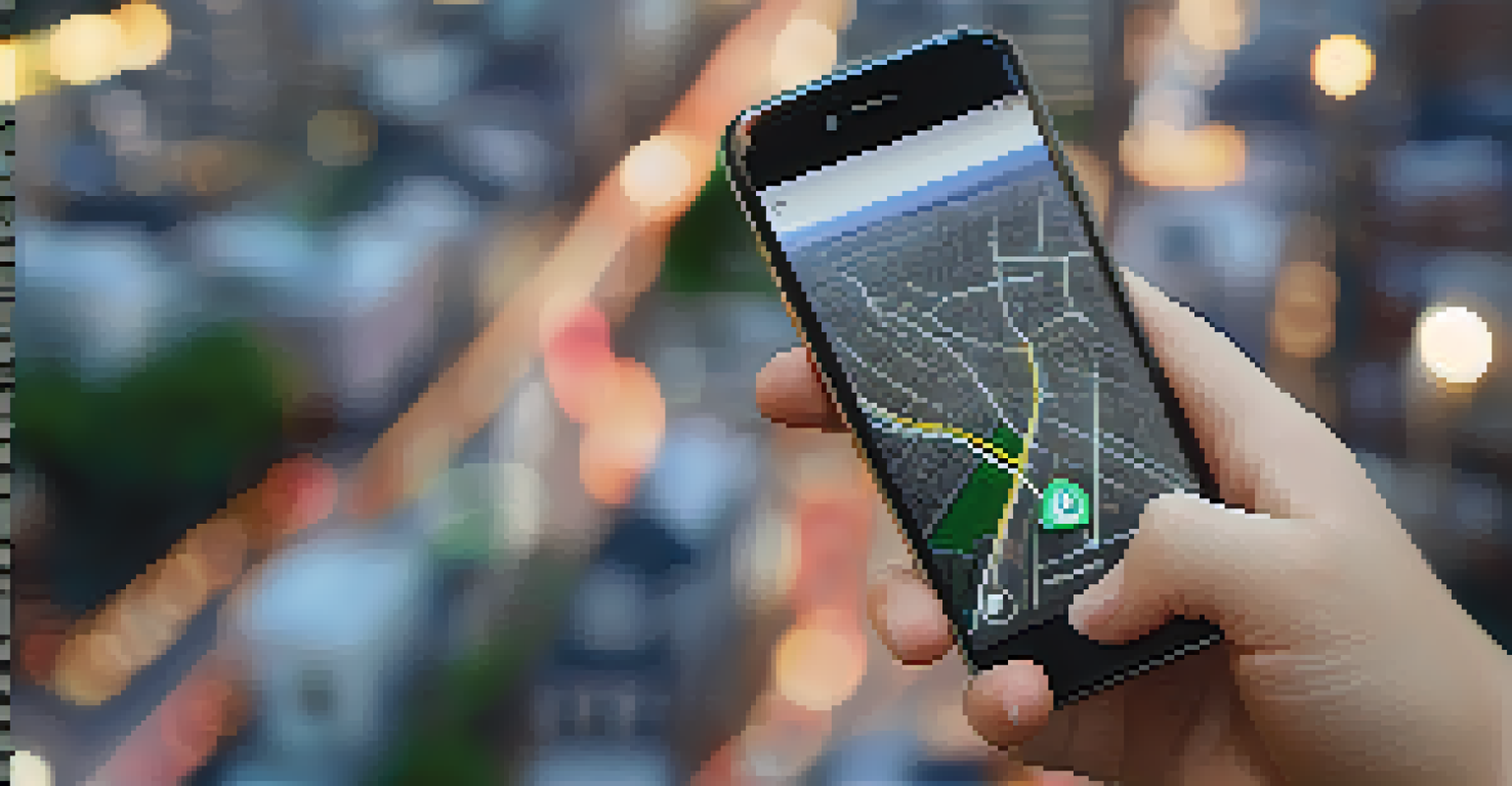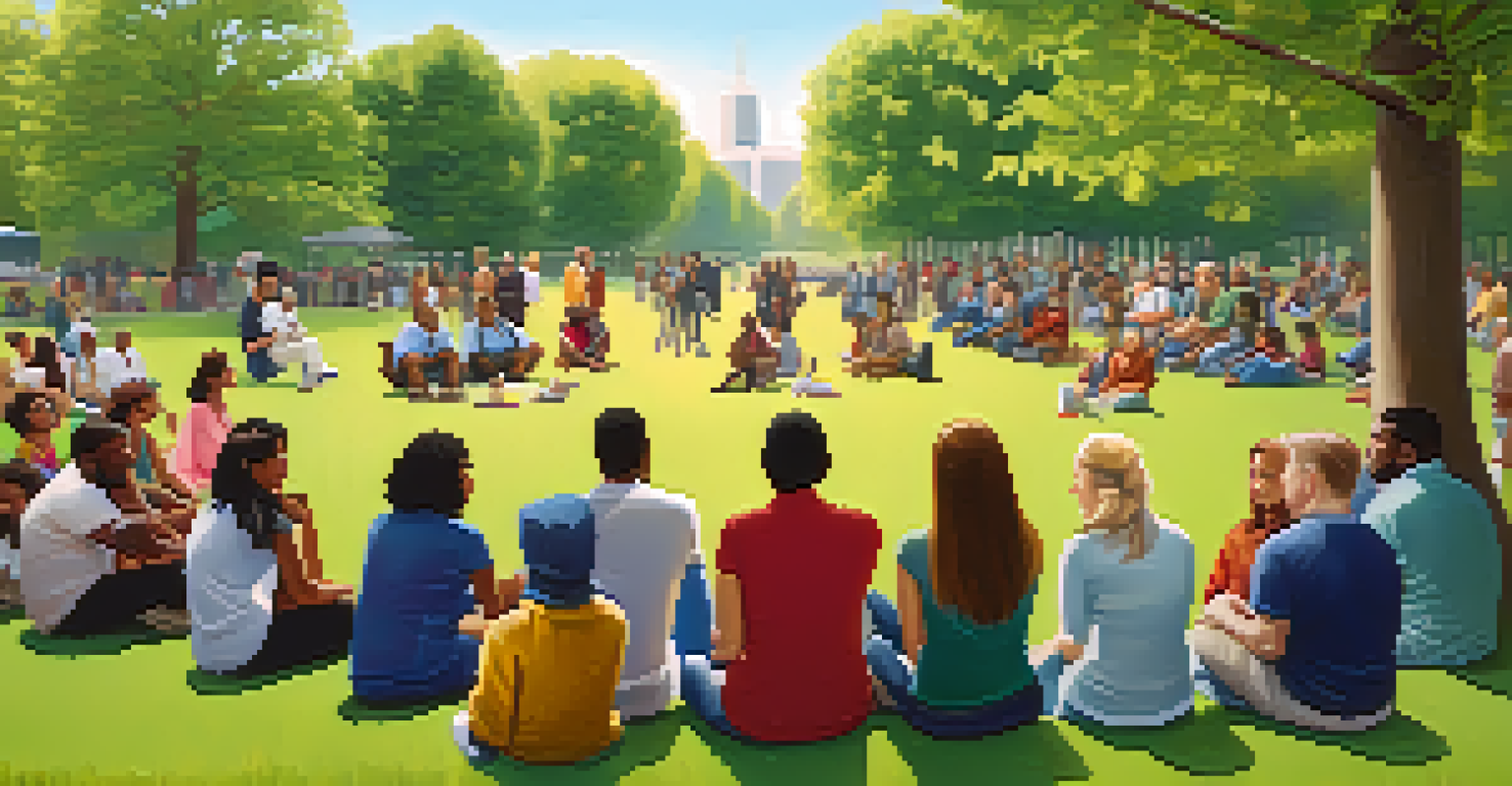Situational Awareness: Your First Line of Urban Defense

Understanding Situational Awareness in Urban Environments
Situational awareness refers to your ability to perceive and understand the environment around you. In urban settings, this means being aware of people, vehicles, and potential hazards that could affect your safety. Imagine walking through a bustling city; your senses need to be on high alert to navigate effectively and avoid unexpected dangers.
The greatest danger in times of turbulence is not the turbulence; it is to act with yesterday's logic.
Being situationally aware isn't just about observation; it's about interpretation. For instance, recognizing that a group of individuals is acting suspiciously can help you assess whether you need to change your route. This skill can often mean the difference between a safe experience and a risky situation, making it essential for urban living.
Ultimately, developing situational awareness requires practice and mindfulness. Just like a driver needs to monitor the road and traffic signals, you too must stay engaged with your surroundings. By cultivating this awareness, you empower yourself to respond quickly and effectively to any challenges you might encounter in the city.
The Importance of Observation Skills
Observation is the cornerstone of situational awareness. It involves not just seeing, but actively noticing details that others might overlook. For example, a sudden change in the demeanor of those around you can indicate something is amiss, prompting you to be more cautious.

To enhance your observation skills, try to practice being more present in your environment. This could be as simple as taking a moment to observe your surroundings while waiting for public transport. Engaging your senses—listening to sounds, noticing movements, and even catching scents—can help sharpen your awareness.
Situational Awareness is Key
Being aware of your surroundings helps you navigate urban environments safely.
Moreover, honing your observation skills can lead to a greater understanding of social dynamics. Recognizing patterns in human behavior allows you to better predict potential threats and respond proactively. In essence, the more you observe, the more equipped you'll be to handle unexpected situations.
Recognizing Potential Threats in the City
In urban settings, threats can come in many forms—be it aggressive individuals, traffic hazards, or sudden changes in the environment. Learning to identify these potential threats early is crucial for personal safety. For instance, noticing a car speeding towards a crosswalk can signal you to move out of the way quickly.
Awareness is the greatest agent for change.
A key part of recognizing threats is understanding your instincts. Often, your gut feeling can alert you to danger before your mind fully processes it. Don't ignore those feelings; they can be a valuable tool in navigating urban spaces safely.
Additionally, being aware of your surroundings can help you spot safety measures in place, such as CCTV cameras or police presence, which can provide reassurance. By combining instinct with observation, you create a comprehensive approach to identifying threats in your urban environment.
Enhancing Your Response Strategies
Having a plan in place when faced with a potential threat is just as important as being aware of your surroundings. This means knowing how to respond quickly, whether that’s walking away from a situation or seeking help. For example, if you notice someone following you, it’s wise to enter a store or a public place.
Response strategies can also include learning self-defense techniques or understanding how to use your smartphone to call for help if needed. Familiarizing yourself with local emergency numbers and app functionalities can be a lifesaver. Think of these strategies as your personal toolkit for urban safety.
Observation Skills Enhance Safety
Sharpening your observation skills allows you to notice details that could indicate potential threats.
Moreover, practicing your response strategies through role-playing or simulations can build your confidence and readiness. The more familiar you are with your options, the better you can react in high-pressure situations, ensuring you remain calm and collected when it matters most.
Using Technology for Situational Awareness
In today's digital age, technology can greatly enhance your situational awareness. Smartphone apps can provide real-time alerts about local emergencies, weather changes, or even traffic conditions. For instance, navigation apps can help you find the safest routes and avoid areas known for crime.
Additionally, social media can serve as a tool for staying informed about your surroundings. Following local news outlets or community groups can keep you updated on situations that might affect your safety. Just remember to verify sources to avoid misinformation.
Wearable technology, like smartwatches, can also play a role. Some devices allow you to quickly call for help or share your location with trusted contacts. Leveraging these tools can create a network of safety, combining traditional awareness with modern technology.
Building Awareness Through Community Engagement
Community plays a vital role in enhancing situational awareness. Engaging with your neighbors and local organizations can foster a sense of shared responsibility for safety. Consider participating in community watch programs or neighborhood meetings to stay informed about local issues.
Moreover, establishing a network of trusted individuals can boost your awareness. When you know who to turn to in your community for information or assistance, you create a stronger safety net. This camaraderie can provide extra eyes and ears on the ground, enhancing everyone's situational awareness.
Community Engagement Matters
Building connections within your community fosters shared responsibility for safety and enhances situational awareness.
By working together, communities can identify and address common threats, making urban environments safer for everyone. The more connected you are to those around you, the better equipped you'll be to navigate potential dangers, creating a culture of awareness and support.
Final Thoughts on Urban Situational Awareness
Situational awareness is an essential skill for anyone navigating urban environments. By understanding what it is and why it matters, you equip yourself to respond to potential threats effectively. Remember, awareness is not just about avoiding danger; it's about embracing the urban experience with confidence.
As you practice observation, recognize threats, and develop response strategies, you'll find your sense of security increases. This journey is ongoing, and each experience contributes to your overall situational awareness. Just like a muscle, the more you work it, the stronger it becomes.

In conclusion, cultivating situational awareness is a proactive approach to urban living. By staying engaged and informed, you not only protect yourself but also contribute to a safer community. So, take a moment today to look around and appreciate the vibrant world you inhabit—after all, awareness is your first line of defense.